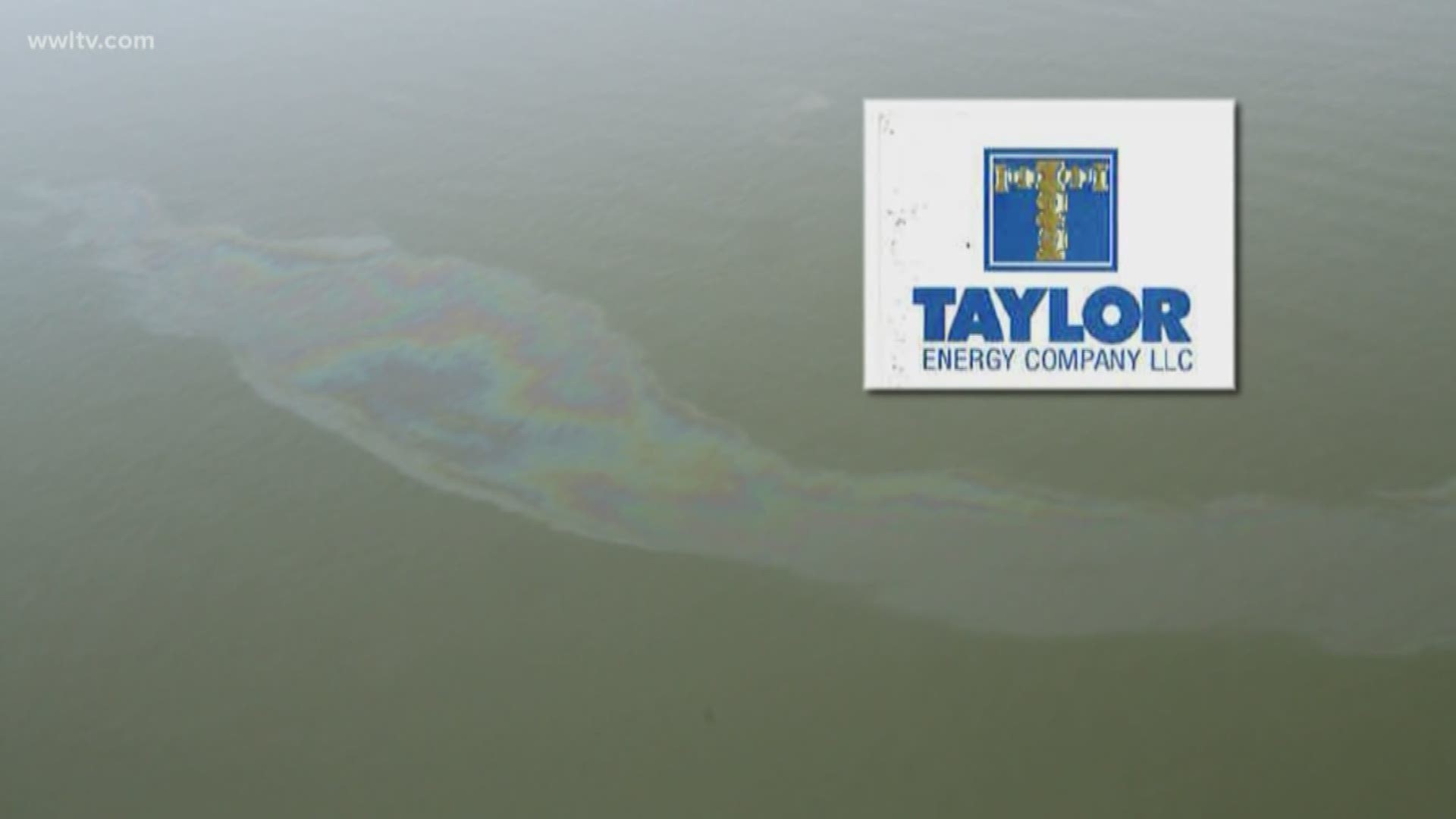The U.S. Coast Guard has made a sudden course correction in how it’s handling a 14-year-old oil leak off the tip of Louisiana.
On Oct. 23, the Coast Guard ordered Taylor Energy to build and deploy a massive containment system to temporarily contain and capture the oil that’s leaking until a permanent solution can be worked out. A sheen has appeared most days in the Mississippi Canyon 20 lease block area, about 12 miles east of Pass a Loutre, ever since Hurricane Ivan toppled the New Orleans-based company’s production platform there in 2004.
The new order is the first since 2012, when the Coast Guard told Taylor to build an oil containment system but never determined where to deploy it. Taylor was ordered to monitor the leak with overflights, but the government reduced the number of flights over time, from twice a day, to once a day, to twice a week.
Taylor had 25 wells at the site and plugged the nine considered the most likely to leak oil. That left 16 wells, and in 2013 a joint Unified Command of Taylor and government representatives determined any further attempts to intervene could cause more harm than good.
Scientific analyses prepared for the Unified Command suggested the sheen was the result of weathered oil trapped under the 2004 mudslide and there was no evidence any well was actively leaking.
But the consensus began to change in 2015 when Taylor sued the Interior Department to get back about $432 million in placed in escrow to resolve the leak. An Associated Press investigation that year addressed inconsistencies in the spill volume analyses the government was using.
Last month’s order states that the Coast Guard now believes at least one of Taylor’s wells is actively leaking.
The new order was issued one day after a Washington Post article appeared on the front page of the newspaper citing a recent analysis that estimated the amount of oil leaking from the Taylor’s wells could be as much as 697 barrels per day, a volume that could, stretched over 14 years, rival BP’s 87-day gusher in 2010.
By contrast, a February 2018 analysis prepared for the Unified Command and paid for by Taylor found the average release rate to be no more than a quarter barrel per day.
The government's report from consultant Oscar Garcia-Pineda came out in September, but was not adopted as the basis for a new government estimate of the spill volume until late October, after The Post story and the slew of attendant national TV stories that followed.
“The worst-case estimate of the daily volume of release far exceeds previous estimates and is in the order of hundreds of barrels per day,” the Coast Guard order states.
The same day the story appeared in The Post, Taylor sent a memo to the Louisiana congressional delegation, asking the lawmakers to consider the “true scientific record” and arguing Pineda-Garcia’s report was a “litigation tactic” in Taylor’s lawsuit in federal court in Washington, D.C.
In its memo to lawmakers Oct. 22, Taylor argued “the best course of action is to continue to monitor the site, allowing for natural biodegradation to remove the oil, but not to pursue any activities that would disturb the seafloor sediments and cause more harm to the environment than potential benefit.”
Taylor also issued a statement to WWL-TV Monday questioning the government’s latest position.
“The Coast Guard issued its order based on flawed analysis and inflated volumes that are completely inconsistent with the scientific record built over a decade by the world's leading scientists, including those regularly relied upon by the government,” Taylor said. “The government refuses to share data to support these inflated volumes, and we have no evidence to support that this newly-ordered containment system will work.”
Last week, Taylor was ordered to hire a contractor to build the new containment system. It failed to meet a deadline to hire that contractor by Thursday.
Containment domes can work to capture oil near the source of a leak and redirect it to a collection system. But previous efforts with this spill have not been successful, and both Taylor and the government have expressed concern about disturbing the area where the oil wells were plugged or blocked.
There are other possible complications with containment systems. When BP tried to deploy a containment dome at its massive spill in 2010, it failed because methane crystals formed and prevented any oil from being diverted to a collection system.
“If there were anything legally permissible and effective that Taylor Energy could do in an environmentally responsible manner to stop the sheen, we would have already done it,” Taylor’s statement to WWL-TV continued. “But we are guided by the facts, and the current scientific record does not support further actions that could cause more harm to the environment than good.”
David Hammer can be reached at dhammer@wwltv.com.

